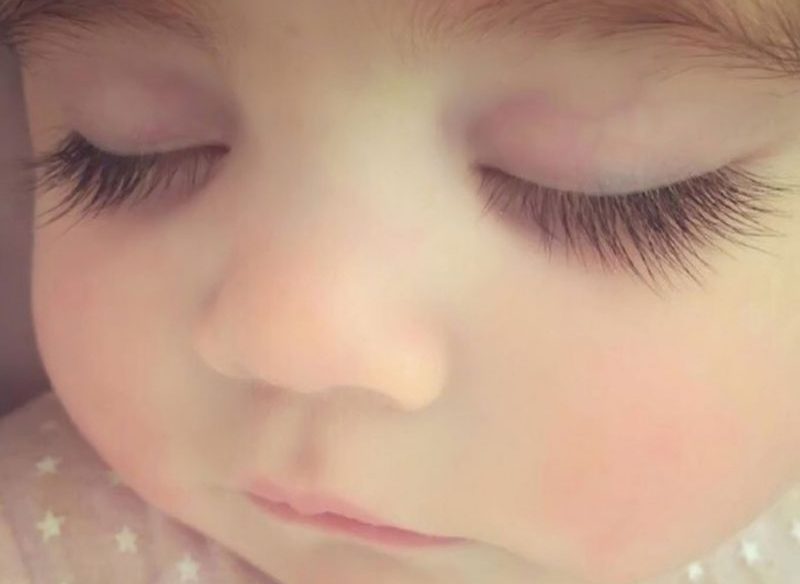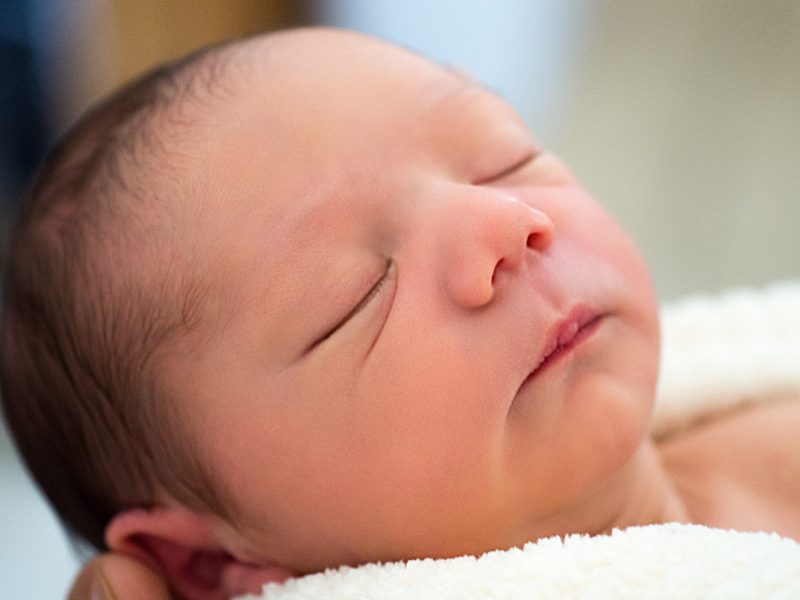There is nothing as beautiful as a newborn baby, except for a newborn baby with gorgeous eyelashes. When babies first come home, they don’t always appear to have newborn eyelashes yet. Instead, you have to wait patiently for them to grow.
It leaves many parents, especially those with girls, anxiously waiting for their newborn to finally grow long, beautiful eyelashes.
View in gallery
Newborn Eyelashes Grow In The Womb
Newborn eyelashes, just like eyebrows, grow in the womb. They start to grow at approximately 20 weeks. Like the other hair on a baby, it can be fine and hard to see.
For example, look at a baby’s eyebrows or the hair on top of their head. Babies might be born with fine hairs where their eyebrows will be, but they can be almost invisible to the naked eye.
Other babies might be born with peach fuzz on top of their heads, but this hair is fine and barely there. Eyelashes may grow in the same way as the other hair.
Some Babies Are Born Without Newborn Eyelashes
View in gallery
Just like how some babies are born without hair on their heads, some babies are, in fact, born without eyelashes. In this scenario, babies might have been affected by the mother’s hormones while in the womb, which can delay them growing their newborn eyelashes.
Other times, the hair follicles are simply there but they have not begun to grow yet. Babies that are born without eyelashes will grow them eventually, though.
Premature Babies Take Longer
Preemie babies, like my adorable grandson, take longer to grow eyelashes because they were born early.
If a baby is born at 30 weeks, they have not had the chance to grow eyelashes as long as other babies yet. If you have a preemie baby, it’s important to give them time to catch up.
Instead of comparing them to babies their age, give them an age that lines up with their due date. Then, determine if they are behind on growing their newborn eyelashes.
Be Careful Of Airborne Particles
The eyelashes are designed to help protect the eye. They prevent dust and dirt from getting lodged in the eye. Because of this, it’s important to be extra careful if your baby does not have newborn eyelashes yet.
Move them to a separate room when dusting, cleaning, or doing other activities that will result in small particles, such as dust, being flung into the air.
Time Varies
Just like it takes some babies time to have prominent eyebrows and some do not for months, it can take different lengths of time for babies to have prominent eyelashes.
Some babies will have light eyelashes at birth, and some will have none. Other babies might have newborn eyelashes at 2 weeks, and others might not have them until they are 6 weeks.
Be patient when waiting on your newborn eyelashes. Both extremes, being born with newborn eyelashes, and not having dark, long eyelashes for months are both normal.
Look Closely
Because baby hair can be extremely fine, it’s important to look closely. Your little one might have newborn eyelashes that are short and blonde, which can make them hard to see.
The next time they are sleeping, use the flashlight on your phone to get a closer look or take a close up picture with the flash on. (Make sure they are asleep so that the light doesn’t bother them.) This can help you determine whether there are tiny blonde eyelashes.
Newborn Eyelashes Grow As The Baby Does
Just like everything else on your little one, newborn eyelashes will grow as the baby does. As he gets taller, his eyelashes will get longer.
Eyelashes will continue to grow as needed for the rest of their life. They know when to stop growing to protect the eyes but rarely grow long enough that they need to be trimmed.
If his hair follicles were a bit premature and he does not have eyelashes yet or is born with short eyelashes, it does not mean that he is cursed to have barely visible eyelashes for his entire life.
Your Baby Is Still Beautiful
View in gallery
Some people lather their baby’s eyelashes with vaseline or growth serums. There is also the unsafe practice of trimming newborn eyelashes.
All of this is an attempt to make eyelashes grow longer and thicker.
Some factors aside from genetics do play a small role in eyelash length. For example, newborns with allergies are likely to grow longer eyelashes.
Aside from medical conditions, there is nothing you can do to encourage eyelash growth. It’s up to genetics, and it’s important to remember that your baby is wonderful just the way that they are.
Do Not Cut Newborn Eyelashes
There is a myth circulating that cutting eyelashes will make them grow longer. This has led to mothers questioning whether they should cut their babies’ eyelashes to help them grow longer and thicker.
This comes from it being recommended to trim your hair to help it grow longer and thicker. The hair on your head eventually develops dead ends which need cut off.
Eyelashes do not have dead ends that need to be trimmed in order for them to grow into healthy, long eyelashes. Mothers can accidentally cut their newborn’s eyelids or poke them in the eye.
Not only is this practice ineffective, but it can also be very dangerous. Instead, you can hope that they have long eyelash genetics and that they will grow in.
Look At Genetics
It’s important to understand that the length and fullness of eyelashes will often depend on genetics. If everyone on both sides of the family has been cursed with short eyelashes, there is a slim chance that your adorable little girl will have long, thick eyelashes.
Likewise, if one person has long eyelashes, there is a chance. Looking at the genetics on both sides of the family can give you an idea as to how long your little one’s eyelashes will be when they are fully grown.
Newborn babies with long, thick newborn eyelashes are without a doubt remarkably beautiful. Babies that are born without newborn eyelashes and children that have short eyelashes are also remarkably beautiful.
If your little one has yet to grow newborn eyelashes, give it time, and remember that it is up to genetics.






